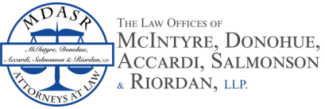Changes to the Scaffold Law have been at the crux of recent discussions in the construction industry. In New York, 2016 and 2015 were statistically the deadliest years for construction workers-dozens of articles recording deaths due to improper equipment were published. In late 2017, two workers fell to their deaths during the same day on separate projects in the city.
Many businesses are citing unnecessary regulations on businesses, higher insurance costs for businesses, and higher taxes as reasons not to proceed with the updates to the Scaffold Law. However, an article recently published stated that this was one of a number of myths surrounding the Scaffold Law. One of the most damning points listed is that most people don’t actually know what construction insurance premiums look like. In the article linked above, Harry Bronson from the New York State Assembly simply puts:
“Third, the facts about insurance premiums. We don’t have them because insurers won’t disclose them. Insurance companies are in the business of risk analysis based on data. Policy decisions should be made based on data. It is disturbing that insurance carriers refuse to disclose the truth about construction liability insurance premiums. Indeed, if the Scaffold Safety Law were legitimately a financial burden, then one would think that insurers would be eager to validate their position and put the information forward.”
While some are squabbling about red tape, costs, and taxes, NYCOSH published a report called The Deadly Skyline. The report appropriately starts with an in Memoriam section for those who were killed due to falls at sites, listing names, ages and locations. The youngest on the list was 19. One would think even those opposing the bill can agree, worker safety is priceless. The precursor to this was when a number of NYCOSH reports related construction injuries and fatalities to union or non-union work sites. These NYCOSH reports showed a greater likelihood to get injured on a non-union project, and that Latino workers’ had a greater likelihood for wage theft and of dying on a work site.
NYCOSH puts forth a number of suggestions as additions to the Scaffold Law in the report:
“In response to the health and safety crisis facing New York’s construction workers, NYCOSH has a series of recommendations. NYCOSH continues its call to protect the Scaffold Safety Law, which grants injured construction workers who fall on the job the right to sue an employer who puts their life in danger. NYCOSH is also calling for new legislation to increase penalties for companies that willingly violate the law and cause a worker fatality, and to revoke the licenses of criminal contractors who were convicted of felonies in the case of a worker death. Finally, NYCOSH recommends increased training for workers, like apprenticeship programs on large construction projects, OSHA 10s on all construction sites, and licensing for elevator construction workers.”
There is no report that could be made that would invalidate the need to not only uphold the Scaffold Law, but to also add NYCOSH’s suggestions to the legislation. When the safety and lives of workers are at risk, businesses should do what they can to protect them. This includes longer training, safer work sites, and generally better employer practices amongst the construction industry.
Links
Letter: NY Scaffold Law protects construction workers
OUR VIEW: Scaffold Law hurts businesses in New York
Misinformation muddies discussion about Scaffold Safety Law
Deadly Skyline: An Annual Report on Construction Fatalities in New York State
City Council can protect NYC workers from construction accidents by mandating better training
NYC official urges city to classify construction site accidents as union or nonunion
EXCLUSIVE: NYC urged to release info on construction accidents to show whether union jobs are safer

Leave A Comment